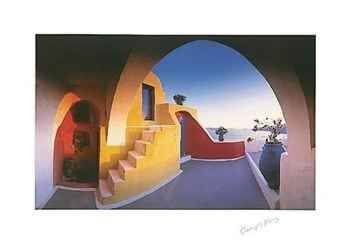
In the universe of flowers used for their fine precious scent used in luxe perfume, no other blossom stands alone as ubiquitous as jasmine, with the possible exception of rose. Indeed those two grace most perfumes’ heart bouquet as the classic marriage of true minds. And although they are distinctly different in character they sing to each other in mellifluous tunes that enrapture and entice.
Yet which jasmine blooms are harvested, how and what do they offer to the final result?
The Perfume Shrine Jasmine Series attempts to shed some light on these aspects.
First of all, jasmine (latin: Jasminum), native to warm and tropical parts of the world, is a genus of shrubs and vines that belong in the family Oleceae (olive) and it comprises about 200 species. As a plant that has so many varieties some misunderstanding around its names and properties is evident. Although all plants named jasmine, (wrongly or truthfully) bear white little blossom of a fragrant nature, numerous among them are not jasmine but closely resemble the classic flower appearance and fragrance.
According to mgonline.com/jasmine, these are the varieties that are commonly called "jasmine":
Jasmine Asiatic - Trachelospermum asiaticum
Jasmine Carolina - Gelsemium sempervirens
Jasmine Chalcas - Murraya paniculata
Jasmine Confederate - Trachelospermum jasminoides
Jasmine Crape - Trachelospermum divaricata
Jasmine Downy - Jasminum multiflorum
Jasmine Gracillimum
Jasmine Lakeview - Murraya paniculata 'Lakeview'
Jasmine Minima - Trachelospermum asiaticum 'Minima'
Jasmine Night Blooming - Murraya paniculata
Jasmine Pink - Jasminum polyanthum
Jasmine Pinwheel - Tabernaemontana
Jasmine Primrose - Jasminium mesnyl
Jasmine Rex - Royal Jasmine
Jasmine Shining - Jasminium nitidum
Jasmine Star - Trachelospermum jasminoides 'Star'
Jasmine Wax - Jasminum volubile
Jasmine Winter - Jasminum nudiforum
Jasminum floridum
Jasminum illicifolium
Jasminum pubescens
Jasminum sambac - Arabian Jasmine
Jasminum sambac - 'Grand Duke of Tuscany'
Jasminum sambac - 'Maid of Orleans'
Jasmin sambac 'Triple' (bloom)
Jasminum simplicifolium - Jasminum volubile
Jasminum x stephanense
Jasminum undalatum
Edited to add: It has been brought to my attention by the perfumer Anya McCoy that the above link might be a bit off. Cestrum nocturnum is the latin name of night blooming jasmine and Murraya panicaulata is also called Orange jasmine (because the blossoms resemble those of bitter orange tree ones). In addition Belle of India is another important variety which they omitted.
Many thanks A!
In perfumery, however, there are two main varieties used: Jasminum grandiflorum and Jasminum sambac.
The name jasmine itself derives from the arab yâsamîn, which is in turn taken from the Persian. It is also the origin of the feminine Arabian name Yasmine/Yasmina. It seems that this is a very ancient shrub that was highly prized since antiquity. In Indian texts occupying themselves with Kâma (=love; from the eponymous deity that symbolizes carnal love) jasmine is considered the flower of love and it is also said that Cleopatra came to meet Marc Antony on a barge whose sails were anointed with jasmine. Even today in French culture the 66 years of marriage are symbolized by jasmine flowers. So romantic….The French have even baptized an underground station (metro) with this name, those rascals!
The main locations where jasmine is grown today are India -especially around Ghazimpur-, southern Europe and China. The origin of all jasmine is said to be Kashmir, a disputed area between Iran and India.
Jasminum sambac (or Arabian Jasmine) flowers belong to a night-blooming breed and are also used -in the Maid of Orleans variety only (edit: this tidbit was mentioned to me by Anya McCoy)- to make chinese tea, which typically has a base of green tea, although an Oolong base is also known to be used. The delicate Jasmine flowers, grown widely in southern China, open only at night and they have to be plucked in the morning when the tiny petals are tightly closed. They are then stored in a cool place until the following night. As the temperature cools, the petals begin to open. They are left in trays where they emit their scent. Flowers and tea are "mated" in machines that control temperature and humidity. It takes four hours or so for the tea to absorb the fragrance and flavour of the Jasmine blossoms. And for the highest grades of tea, this process may be repeated up to seven times! Real jasmine tea should have all of the fragrance of the flower, but no trace of the flower itself.
Sambac is also the National Flower of Indonesia, where it grows in abundance going by the name of "Melati", and also of the Philippines, known as "Sambaquita". In Indonesia (especially Java), it is the traditional flower in wedding ceremonies for natives.
To add to the confusion in Hawaiian it is also common to refer to this variety as "Pikake", especially so for the more bulby blossoms that are used in leis.
Jasminum officinale (white jasmine or ye-hsi-ming in China) is the national flower of Pakistan, locally called "Chameli" or "Yasmine". In Sanskrit it is called Mallika. It is cultivated at Pangala, in Karnataka, India, and exported to Middle East countries.
Jasminum Grandiflorum, also known as “Royal” or “Spanish jasmine” , although it grows all over warmer regions of Europe as a perennial fragrant vine of intoxicating blooms, has its origin most probably in India from where it came into Europe. The Indian name for it is Jati from Sanskrit; which is a bit confusing as it also refers to the Sambac variety; so for our purposes we are going to use the latin terms for ease of reference. It is worthy of note that no less than 42 varieties of jasmine are cultivated in India!
It is admittedly the most widely used in perfumery.
Grandiflorum became the predominant culture of jasmine in Grasse, French capital of perfumery, even as far back as the 18th century. The crops is gathered in the month of August, before the break of dawn almost, so as to retain the most of the dewy petals and their fragrant emissions, while the whole process has to be performed delicately and quickly, before the little blossoms wield to the heat. It is so precious and expensive because in order to produce 1 kilo of essence 7 million flowers are estimated to be needed.

It is said that 10 600 flowers go into the production of 1oz of Patou’s Joy perfume, by perfumer Henri Almeras, so its tagline of “costliest perfume in the world”, introduced in the 30’s is not as much a myth as might have been surmised. Unfortunately today the Grasse jasmine is rarely used, although Patou still maintains that they employ it in the classic formulation for Joy and 1000. For Chanel perfumes, athough the company still maintains their own fields of jasmine (as well as tuberose) in Grasse, the precious essence only lurks in the parfum /extrait concentration, leaving the eau de toilette and eau de parfum ones a bit lacking. Guerlain used Grasse jasmine in their classics L’Heure Bleue, Mitsouko, Après l'Ondée, and Shalimar parfum, but it doesn’t seem to be the case anymore. Autres temps, autres moeurs!
Now about 4/5 of the fragrance production utilizes jasmine crops from India, Morocco, Egypt and Italy.
Comparing the two varieties, we see that the flowers of Jasminum Grandiflorum have larger and wider petals with a slight tint of red “veins” on the outside compared to those of Sambac, which are more bulb-like with more pointy ends.
Photo of Jasminum Grandiflorum can be seen clicking here.
Photos of Jasminum Sambac can be seen clicking here.
The fragrance is also a little different: Sambac is a little sharper, while Grandiflorum has a more full-bodied tonality, opulent and richer, yet with a fruity freshness accounting for differences in the end result in fragrances. Sambac on the other hand is higher in indoles, which is essential for it to be pollinated in the night and thus the fragrances that contain it may appear more animalic or heady.
Jasmine, the king of flowers, is considered by aroma therapists to be a herbal remedy, used as a sedative, antidepressant or an emollient. It is also considered a powerful aphrodisiac. The flowers and the essential oil are used in herbal preparations, but they are not to be ingested.
The main consitutent of jasmine are benzyl acetate and linalool, which are considered possibly allergenic in internal consumption, that’s why.
To obtain jasmine essence from the little blossoms, the enfleurage method is necessary. Distillation is not delicate enough for the sensitive little flowers.
According to essential oils.co.za:
"It requires flowers to be hand picked and layered over a glass frame coated with a mixture of animal fats. Glass plates in a frame (called a chassis) are covered with highly purified and odorless vegetable or animal fat and the petals of the botanical matter that are being extracted are spread across it and pressed in. The flowers are normally freshly picked before so encased in their fatty bed.
The petals remain in this greasy compound for a few days to allow the essence to disperse into the compound, where the then depleted petals are removed and replaced with a fresh harvest of petals.
This process is repeated until the greasy mix is saturated with the essence, and needs to be repeated a couple of times until saturation is achieved.
When the mix has reached saturation point the flowers are removed and the enfleurage pomade - the fat and fragrant oil - then washed with alcohol to separate the extract from the remaining fat, which is then used to make soap.
As soon as the alcohol evaporates from the mixture you are left with the essential oil. This is a very labor-intensive way of extraction, and needless to say a very costly way to obtain essential oil and is nowadays only sometimes used to extract essential oil from tuberoses and jasmine. The essential oils is separated from the fat through a process not unlike a solvent extraction, using ethyl alcohol."
According to Wikipedia, there are actually two seprate methods of enfelurage ~cold and hot:
“In cold enfleurage, a large framed plate of glass, called a chassis, is smeared with a layer of animal fat, usually from pork or beef, and allowed to set. Botanical matter, usually petals or whole flowers, are then placed on the fat and their scent is allowed to diffuse into the fat over the course of 1-3 days. The process is then repeated by replacing the spent botanicals with fresh ones until the fat has reached a desired degree of fragrance saturation. In hot enfleurage, solid fats are heated and botanical matter is stirred into the fat. Spent botanicals are repeatedly strained from the fat and replaced with fresh material until the fat is saturated with fragrance.
In both instances, the fragrance-saturated fat is now called the "enfleurage pomade". The enfleurage pomade is washed or soaked in ethyl alcohol to draw the fragrant molecules into the alcohol. The alcohol is then separated from the fat and allowed to evaporate, leaving behind the essential oil of the botanical matter. The spent fat is usually used to make soaps since it is still relatively fragrant.”
Today synthetic jasmine is easily produced and preferred due to the extreme cost of enfleurage and hedione is one of the most usual ingredients in substitution of real jasmine essence, a synthetic that smells of the greener, fresher part of jasmine; however in quality perfumes some real jasmine absolute is added to remove the harshness.
As a final note, although jasmine notes and perfumes are usually considered heady and animalic in the universe of perfumery, actual perfumes that are considered thus are a tad further from the flower. Someone saying that a "clean" jasmine scent does not posess a "true" jasmine quality sometimes denotes that one is not acquainted with the flower itself. A "true" jasmine scent would be cleaner, lighter or fresher than most of them. It is the enfleurage method that produces headier scents and it has to do with the inevitable decay that happens during the process, that allows much more of the indolic character of the flower to surface, a fact that is not as predominant when the flower is on the vine.
Next part coming soon.....
Pic of jasmine courtesy of mgonline.com
Pic of Joy bottle from Patou site.
.jpg)










.jpg)


